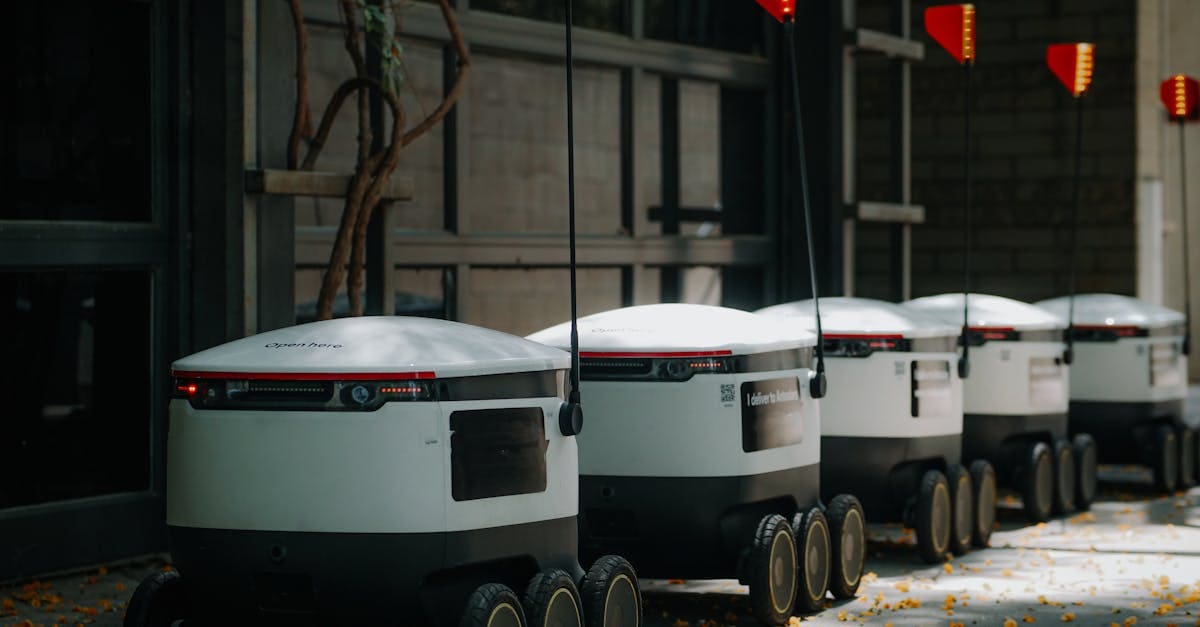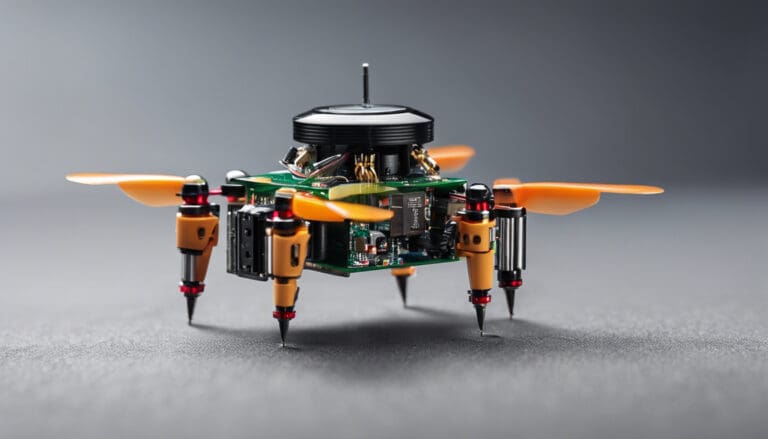5 Trends You Can’t Ignore in AI Underwater Robotics
Imagine the mysterious depths of the ocean as a vast, unexplored frontier, much like the boundless expanse of outer space. In this intriguing realm, AI underwater robotics serve as the pioneering vessels that unlock new possibilities beneath the waves. As these technological marvels dive deeper into marine exploration, they transform the way we interact with the ocean, offering insights that were once beyond our reach. From performing intricate inspections of offshore wind farms to mapping the seafloor with unmatched precision, these advancements are charting new courses in marine technology.
Why does this matter to us? Simply put, our world’s future hinges significantly on how we manage and conserve our oceanic resources. The development of underwater drones and autonomous marine robots is not only enhancing our understanding of marine ecosystems but also providing sustainable solutions for deep-sea mining and renewable energy projects. With AI-driven innovations, like those from Beam and Impossible Metals, we can achieve more efficient operations and safer environmental practices, crucial for a future that respects both industry needs and ecological balance.
Curious about how these trends are reshaping ocean exploration and conservation? Dive into the article to explore the five essential trends that are making waves in the realm of underwater technology.

Photo provided by Kindel Media on Pexels
In the article
- AI underwater robotics Innovations
- Impact on Marine Exploration
- Advancements in AI ocean mapping
- Role in Marine Conservation
AI Underwater Robotics Innovations
Autonomous Underwater Vehicles
One of the most exciting developments in AI underwater robotics is the introduction of autonomous underwater vehicles. I recently read about Beam, a high-tech offshore wind service provider, launching a groundbreaking AI-driven vehicle that inspects offshore structures. This innovation not only reduces inspection times by 50% but also improves data quality and enables the creation of 3D asset reconstructions. The work done by Beam at the Seagreen wind farm in Scotland demonstrates how these vehicles can significantly cut costs while enhancing the safety and efficacy of offshore operations. Therefore, plans to expand their fleet by 2026 signify their commitment to this revolutionary technology.
AI Marine Technology in Wind Farms
AI marine technology has become integral to the functioning of wind farms, particularly by reducing inspection times and increasing data quality. At the Seagreen wind farm, this technology has been shown to decrease the need for offshore personnel while providing richer data sets. I find it fascinating how this technology aids in meeting safety and net-zero goals set by enterprises like SSE Renewables. The ability to utilize 3D asset reconstruction also stands out, offering precise inspections and maintenance guidance. With the aid of AI, the offshore wind sector is becoming more efficient, providing a viable alternative to traditional energy sources such as oil and gas.

Photo provided by Tara Winstead on Pexels
Impact on Marine Exploration
When I think about the future of robotics in marine exploration, it’s clear that AI underwater robotics holds great promise. One particular area where these innovations are making an impact is deep-sea exploration. Responsible deep-sea mining is an exciting prospect for me because it addresses the challenges and possibilities of extracting resources beneath the ocean floor. Impossible Metals is a company that has developed eco-friendly mining robots, aiming to reduce the environmental impact compared to traditional methods. They aim to commercialize these technologies within five years, signaling a potentially transformative shift in mining practices. I am intrigued by their efforts to balance autonomous navigation, sustainable operations, and resource efficiency.
Robotics for Deep-Sea Exploration
Deep-sea exploration is another domain where AI underwater robotics is making waves. I read about Impossible Metals developing a robot prototype called Eureka for sustainable deep-sea mining. This AI-driven robot can carefully pick up metal nodules without causing harm to the seafloor, showing the potential for eco-friendly operations. The plan to deploy fleets of these robots at depths of four miles underwater is an ambitious goal, highlighting the technology’s capabilities and the setbacks it could help overcome in deep-sea mining. Although environmental concerns exist, the prospect of moving to commercial use within a few years is encouraging.
- Autonomous navigation is a crucial element in these operations because it allows the robots to explore vast underwater territories without human intervention.
- Sustainable operations ensure that these technologies align with environmental conservation goals by minimizing disturbances.
- Resource efficiency is a target for these technologies, as they aim to use resources wisely without waste.

Photo provided by Kindel Media on Pexels
Advancements in AI Ocean Mapping
Precision in Offshore Maintenance
Advancements in AI ocean mapping have notably improved precision in offshore maintenance. I find it revolutionary how these advancements allow robots to replace traditional maintenance ships, drastically cutting fuel use by 97% and reducing associated risks. Heriot-Watt University’s UNITE project illustrates these capabilities impressively. Their robots stabilize against structures even in rough seas, performing tasks like inspections and repairs with a level of precision previously unattainable. This marks a significant improvement in the efficiency and safety of offshore operations.
Marine AI Applications in Energy
When considering marine AI applications, I see the growing offshore wind sector as a major beneficiary. By improving efficiency and aligning with net-zero goals, these technologies support a sustainable energy future. The emphasis on quick data insights, reducing processing times from weeks to hours, is a game-changer that enhances decision-making processes. Furthermore, the collaboration with institutions like Imperial College London demonstrates how academic and industrial partnerships drive innovation and efficiency in renewable energy sectors.

Photo provided by Tara Winstead on Pexels
Role in Marine Conservation
Robotic marine research brings significant benefits to conservation efforts, a subject close to my heart. By using autonomous underwater robots to monitor marine habitats, we can ensure minimal human intervention, which is crucial for protecting sensitive areas. These robots help to support sustainable practices and biodiversity, contributing to a healthier ocean environment. They play a vital role in preserving marine life by providing precise data and analysis, which aid conservationists in making informed decisions.
AI Marine Conservation Strategies
It is interesting to see how AI marine conservation strategies emphasize reducing human intervention while enhancing monitoring accuracy. Autonomous underwater robots can operate in areas that are difficult for humans to access, gathering crucial data while minimizing environmental disturbances. This technology supports sustainable practices by providing insights that help protect biodiversity. I can see how these strategies balance the need for technological advancement with environmental preservation.
Challenges and Opportunities
I believe that balancing technology with environmental preservation remains a key challenge in marine conservation. Collaboration with scientists is vital for ensuring that these technologies do not harm the ecosystems they aim to protect. While challenges exist, the opportunities for positive impact are immense. Engaging with marine experts and leveraging technology responsibly can lead to breakthroughs in our understanding and protection of marine environments.
The journey of integrating AI in marine conservation is ongoing, and with thoughtful planning, it will enable us to explore new frontiers in marine research. By carefully navigating the challenges and maximizing opportunities, we can ensure a future where technology and nature coexist harmoniously. The potential for AI in marine conservation is vast, and it’s up to us to harness this potential wisely.
Embracing the Future of Marine Robotics
Throughout our discussion, we explored various trends that are shaping the future of marine robotics. The advancements in autonomous vehicles, precision in underwater navigation, and the role of artificial intelligence in marine technology are revolutionizing how we inspect, explore, and utilize our oceanic resources. With innovations like those from Beam and Impossible Metals, these technologies are not just reducing costs and improving data quality, but they are also paving the way for sustainable exploration efforts.
To take full advantage of what we’ve learned, it’s crucial to stay informed and remain proactive in this evolving field. I recommend diving deeper into the developments brought by leading projects like UNITE and Eureka. By doing so, we can anticipate changes and adapt our strategies to leverage these cutting-edge technologies for marine conservation and responsible resource extraction.
Engaging with the marine technology community is a rewarding next step. Consider sharing insights from our conversation with peers or on social platforms to foster discussions. By connecting with others in the industry, we can collectively drive innovation and ensure the safety and sustainability of our shared marine environments.







